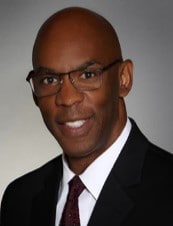Author: Gary M. Levin M.D., Health Train Express
The coronavirus pandemic has caused a massive rewrite of the way we deliver healthcare in the United States. Perhaps most consequential among many changes has been the remarkably rapid pivot to telehealth.

Bernard Godley, MD, PhD
Regulators and payers have relaxed patient privacy and reimbursement policies that had inhibited the use of telehealth, dramatically altering the playing field. We can safely assume that the widespread use of telehealth will outlive the pandemic and become a fixture of patient/provider interactions.
As a result, it's critical to develop a new job title that will integrate telehealth into health system operations and maximize its still untapped potential. As the healthcare system moved away from the transactional model of care and toward the experiential model, a new title was created: Chief Experience Officer.
Another new title was created for leaders guiding their systems from volume- to value-based delivery: Chief Transformation Officer. The Chief Medical Information Officer role was created to drive integration of EMRs and other digital platforms in support of system transformation.
Now an additional title is likely to become common in the C-suites of many hospitals, health systems, and large medical groups post-COVID-19. This title is so new that there is as yet no name for it. Our proposal: Chief of Distance Care Delivery. It might more simply be called Chief of Telehealth, while CMO for Telehealth or Chief Digital Care Officer are other options.
Post-COVID-19, convenience, and lower cost will continue to drive the expanded use of telehealth. As the crisis subsides, regulatory and reimbursement organizations will require that policies be enacted to bring quality, safety, privacy, and other benchmark standards in line with those of traditional delivery methods.
An emerging leadership position will have to be assigned to oversee what could become the primary method of providing ambulatory care, along with artificial intelligence-driven interfaces and remote patient monitoring technology. What would be the duties of this role, and who would qualify?
Briefly stated, the Chief of Distance Care Delivery (CDCD) would conceptualize, implement, and maintain high-quality telehealth services across the hospital, health system, or group. In academic environments, the role also might entail an outcomes research component.
Key to the role would be developing and overseeing quality, patient experience, and safety care measurements and protocols. Similar to other dyad structures, the role may evolve to have an administrative and/or nursing partner as telehealth becomes a major source of revenue, potentially overwhelming traditional ambulatory care delivery in some settings.
Joseph Kvedar, MD, president of the American Telemedicine Association and professor of dermatology at Harvard Medical School, has personally observed how health systems, physicians, and patients have rapidly embraced telehealth. He notes that at the Brigham and Women's/Massachusetts General Hospital–affiliated Partners Healthcare System, a network of about 7000 physicians, there were only 1600 virtual patient encounters in February 2020. In April 2020, that number had jumped to 242,000.





























